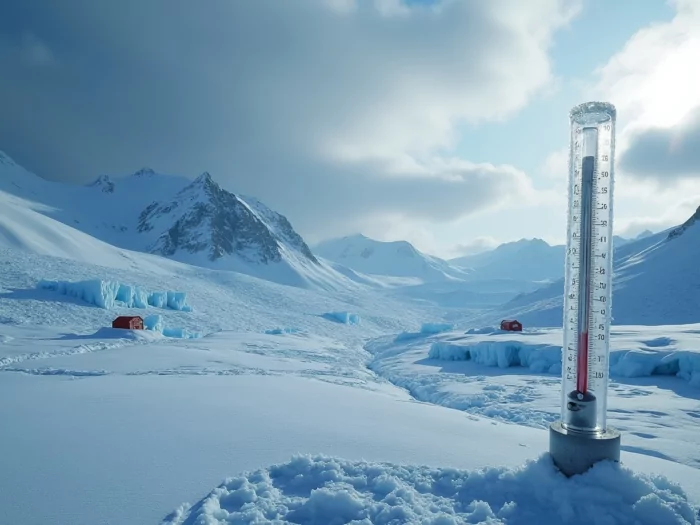
How cold can it be?
Cold is not just an unpleasant feeling, but a real test for all living things. But Incredible cold: where on Earth are the lowest temperatures??
If you ask someone about the coldest place on Earth , most will immediately remember Antarctica. And this is logical! It was there, at the Vostok station, in 1983, a record minus of -89.2°C was recorded . This is not just frost, it is a real catastrophe for any living creature. Breathing such air is dangerous – the lungs can get burns from the cold.
But here’s an interesting detail: in 2013, satellite data showed an even more extreme temperature — -98.6°C ! This was recorded on the slopes of the Antarctic Plateau, in the depressions between the ice ridges. It’s hard to even imagine how cold it is. It’s impossible to survive there without special equipment.
Why is it so cold there?
- Distance from the ocean . The ocean affects temperature, making the climate milder. But deep in Antarctica, its influence is minimal.
- Polar night . The sun may not appear for months, and all this time the ice only gives off heat into space.
- Altitude . The higher above sea level, the colder it is. The Antarctic Plateau rises to over 3,000 meters.
Could it get any colder?
Theoretically, yes. Scientists believe that under certain conditions, the temperature on Earth could drop to -100°C or even lower. For example, if weather patterns change or if natural disasters occur.
How do living organisms survive in such conditions?
When it comes to temperatures below -80°C, it seems that nothing can exist there. But nature always finds a way out. For example, microorganisms living in Antarctic glaciers have special antifreeze proteins. They prevent cells from freezing even in deadly cold.

But large living creatures cannot survive in such conditions. Even the most hardy inhabitants of cold climates – polar bears and penguins – are not adapted to such extreme temperatures. Therefore, where the temperature drops below -80°C, life is practically absent.
How can a person survive at -90°C ?
In reality, only in special equipment. Polar explorers working in Antarctica use several layers of warm clothing, thermal face protection, and special oxygen masks. After all, inhaling such frosty air directly is dangerous, it can burn the lungs.
It’s also important to keep moving. Even the best clothing won’t save you if you just stand still – your body will quickly start losing heat.
Can such frosts occur in ordinary cities?
Fortunately, temperatures below -80°C are an exclusively polar phenomenon. The lowest temperature ever recorded in a settlement was recorded in Oymyakon (Russia) at -67.7°C . This is a real test for local residents: cars only work with a constant engine warm-up, and without special clothing, you can get frostbite in just a few minutes.

But what’s interesting is that even under such conditions, there are schools, shops, and normal life there!
Are even more extreme cold possible?
In terms of climate, Earth’s temperature has already been much lower in the distant past. For example, during the so-called “snowball period” hundreds of millions of years ago, the entire planet may have been covered in ice, and temperatures may have dropped even lower than the current Antarctic records.
Scientists also suggest that in the event of a major volcanic eruption or nuclear winter, temperatures could drop even more. But for now, the coldest temperatures remain exclusively in remote polar regions.
Why is this even important?
Studying extreme temperatures not only helps us better understand Earth’s climate, but also helps us prepare for future changes. For example, studying the Antarctic cold provides insights into possible conditions on other planets. Who knows, maybe one day humanity will go to live in places where such cold temperatures will be the norm.
Read also: